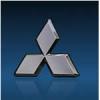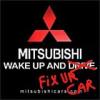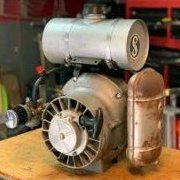All Activity
- Today
- Yesterday
- Last week
-
Yeah, I guess I don’t know if it blows any when I was actually able to drive it. I’ve tested the IAT, MAF and they test a bit over, but nothing too abnormal. The ISC is something that I tested and the number was abnormally high, but the car used to idle so I just put it back in. As for the coil on summit it shows the resistances and they are quite a bit off from what mine are, which is weird?? It’s basically brand new. i know it’s definitely something to do with the TB but I’ve checked over it so many times that I lost count and i couldn’t see anything out of the ordinary. I think it’s something to do with an electronic like the ISC or something. I wish I was able to get the car to somewhat idle so I can do a TPS/ISC reset. thanks for your response!
-
That definitely sounds rich, I would expect a little puff of black though. Especially at idle they do like to be a bit rich. As for the MAF, it seems to be hit or miss on an 86. Some are fine without it, others not. You can test the IAT. I believe the specs are in the service manual or they are definitely buried here somewhere. Same for the blaster coil. I'm sure you can find primary and secondary specs from MSD. In my experience if the coil is bad it wouldn't rev well, especially under load. My money is on something around the TB. 99% of the time the problem stems from where you worked on it last. Usually late night and not 100% sober has caused me some grief once or twice 😄 If you cleaned the ground and reinstalled then I can't imagine that is the issue. You can always take a resistance reading from the ground connection to the top hat on the TB just to be sure there is a good connection. Also from that connection to another spot on the body just to make sure you have a solid ground. Might be a stretch, at least you can be sure then.
-
I did have a stock psi FPR installed before, which it didn’t run and why I bought a adjustable one to see if the more fuel pressure would help but it didn’t… Yeah when I unplugged my MAF it ran really bad, and that’s when it was actually running good. I wonder if maybe mines bad and that’s why unplugging it doesn’t help cause I know a lot of people say they can be ran without. Maybe even my IAT is bad? when I had the TB apart I cleaned the contacts on that ground, maybe I installed that wrong, who knows it was probably late when I got it back together. Lol. I haven’t pulled plugs yet, but it’ll burn your eyes if you’re around it and there’s a little bit of black soot in the exhaust pipe, but doesn’t blow any black smoke when I get it to rev out good. I do know these cars are supposed to run rich so maybe its alright. I guess I don’t remember what it was like when it ran good. also just a wonder, I bought a MSD blaster ll when I was in the restoring phase and the first start of the car was good and I never checked the resistances. But I just checked them and the secondary resistance is a bit lower than what FSM shows. Could that be an issue? I wish I would’ve checked it before to see if the coil had gone bad. Also not a hard issue, just have to get a good coil. thanks for your help!
-
Gotcha, I couldn't remember if the stock system primed or not. Yes, I believe 38psi is correct for the stock injectors. Southbay advertises their injectors as a "direct fit, compatible with the stock ECU" I wonder if that means they are designed to work at the lower pressure? Easy enough to try. On my 86 unplugging the MAF actually made it idle better, so I left it that way for years. 86 are a breed of their own. The IAT being unplugged should have caused a rich condition, but if you are already rich... Is the ground to the intake manifold still there and in good shape? I've seen grounding cause all sorts of weird issues. Probably not the likely culprit in your case, just something I thought about since a lot of sensors use that for a ground reference. You mentioned it smells rich. Have you pulled a plug to verify? Or noticed black smoke when you stab the throttle?
-
I do know that 42 is high for stock injectors, i haven’t ran it yet with the old injectors back in. When I put the adjustable FPR it came set at 42psi, which I thought was perfect for aftermarket injectors so i didn’t mess with it. When I do put back in the old injectors to see if it’ll even run better, I’ll have to adjust it of course. Also isn’t stock pressure like around 38psi? Just want to make sure as when I do go to adjust it I do it right. It’ll only prime the pump when ECU sees rpm’s, so I’d need to crank it which isn’t a big deal. I have unplugged the ISC, MAF, IAT, to see if it’ll run better and none seem to improve my symptoms. thanks for your reply, any help is appreciated!
-

Jet Valve O-Rings(?) while doing Valve Stem Seal job?
techboy replied to techboy's topic in Virtual Mechanic
I actually listed my Starion for sale 2 years ago for one the nicest Turbo 944's I have ever come across. The seller was super cool and gave me a chance, but in the end I couldn't sell the car quick enough and it sold ... unfortunately the car went overseas. I LOVE 944's and would really like to own one someday. -
psu_Crash started following Boost/altitude sensor and 86 idle problems
-
42psi is too high for the factory injectors. Sounds like you already know that though. Are you setting the FPR without a vacuum connected? Otherwise it will be too high. I don't remember if it will prime the pump when you turn on the key. Mine has been far from stock for a LONG time. That's one way to see pressure without starting the car if it will. Might require 2 people since even though pressure shouldn't bleed off quickly it will still drop.
-
I figured it out thank you all. I broke the solenoid nipple when I was redoing my hoses found the upper side had a weird valve I think it’s a reefs valve. It was messed up couldn’t blow or suck through so I vented it atmosphere. It runs so much better full boost no hiccups for now.
-
I know there’s been many posts about 86 idle issues, but none seem to answer my questions. It all started when I took off my TB to put some fresh gaskets in it and to overall clean it. During that process I never touched the TPS, but I did take out the ISC to have a look at it and found the screws to be burnt? Like there purplish blueish. Put it back in as it ran good before I pulled anything. During that process I soldered in new injector clips, and I’m 99% sure I soldered the correct wires together and had no cold solder joints. after re-installing everything, new vac lines all ran correctly (I’ve checked numerous times), TB installed correctly, my car will not idle at all. I have to have my foot on the pedal and manually idle it. Revs out pretty good but won’t idle. Now I thought why not buy new injectors as these look pretty bad. I bought Southbay 850cc injectors, installed them and it struggles to idle. Even worse than it did before. It’ll kinda rev out fine but will not idle. I have an adjustable FPR as I read that for aftermarket injectors you need higher pressure. Put that in with a gauge, which reads 42psi which should be plenty and it still runs like poop. It smells super rich when you try to get it to idle. Even with factory injectors back in. I can’t really do a TPS/ISC reset as I can’t even get it to idle. Maybe someone knows of a cheat that you can do to rule some things out?? any help would be appreciated! I just wanna enjoy some backroads with this car. thank you!
-
Intake to the MAP should be fine. I ran my 86 like that for years because, like most, I broke a nipple off that solenoid. I don't remember what other line comes off that. Should be a diagram under your hood to chase it down, then decide if it needs a vac reference.
-
You have an 86-model year if you have a map sensor. Sorry mine is an 88-model year that doesn't have a map sensor. Completely different vacuum hose routing.
-

Jet Valve O-Rings(?) while doing Valve Stem Seal job?
psu_Crash replied to techboy's topic in Virtual Mechanic
Good deal. Sounds like you have plenty to keep you busy! Congrats on the new house and garage! Man ... I kick myself for selling all that stuff off too. I should have stuck with the plan and 63/64 swapped the Valencia car. It would probably be running now if I had. Still have the LS on the stand waiting for a home though. My problem is I bought an 86 944 that took a lot of time and $$ to get on par. Driving the wheels off it now though! Not to mention it's been hot as Hades lately!! That makes garage work slow - Earlier
-
The three nipple one going to the map sensor and it’s next to the map sensor. I’m wanting to simplify the vacuum hoses and seems like that can be deleted but it did causing idling issues for my car. I did not cap them I ran the intake to the map sensor and it ran great but wanted to die at idle
-
AZ89Fiji joined the community
-
Are you talking about the one the wastegate lines connect to? If so, I deleted mine long ago when I installed hard piping.
-
Are the boost solenoids important on these cars?
-
Garage86 joined the community
-
@Funky Phil - any spare injectors, turbos or aftermarket intercooler/hard pipes?
-
Starquesting can be an expensive and sometimes frustrating "hobby" but you'll be driving something a lot of people have never seen and still looks cool 35 years after it was released. But, there's a lot of knowledgeable people on this board who are always willing to share their experience and advice.
-
Thanks! No cool photos this week, because I wasn't doing body work. I put the engine back in it. Figured everyone has seen tons of pictures of that. The full engine bay is almost back together. I'm in the process of cleaning up my replacement radiator. I was contemplating having it professionally cleaned but the internals of this thing are looking good. I can also tell that it has been worked in the past...pretty easy because there is a metal tag on it from the radiator shop that did the work haha. I believe it has been re-cored. I'll finish that up this coming weekend and hopefully will turn the key to make sure everything is operational. Then it is on to paint prep of the cosmetic panels, as well as some rust repair in my replacement bumper support. I ordered the paint products on Friday; more epoxy, base, and clear. Still need to buy some new vinyl decals but that can wait a bit. techboy, Rummaging through boxes in my garage for something and ran into a set of oil cooler lines! So, I'll bring yours back next time we meet up. Thanks again! kev
-

Jet Valve O-Rings(?) while doing Valve Stem Seal job?
techboy replied to techboy's topic in Virtual Mechanic
I'll definitely post up with what I find out, but it might be a little bit - like fall or winter. Other than that the initial puff of burnt oil the car is running really well and I'm in the middle of a building a garage at the new house, restoring a Galant VR-4 with my son and I bought a new turbo for the Eclipse almost 2 years ago I'd like to get installed and tuned, so barring anything crazy the Starion is kinda on the back burner for now. Honestly, I don't think I would ever build another G54B at this point. If something were to happen to my current motor, I'd swap - just not sure to what. I'm kinda between 4G63, 5.0 and 1JZ. I'm still kicking myself for not buying all the 4G63 stuff from you when you moved. -
Sounds like you have a good plan. Just FYI, I used a gas tank kit from KBS coatings many years ago and it has been great! There are lots of solutions there though. Image links aren't working for me
-
LizardKing started following Front End Collision Repair
-
What hit? 🤷♂️ Looks good from here!
-
Welcome fellow Texan, there's a few of us around here including a few guys around the San Antonio area. The car looks really clean for being the age it is.




